MODULE 13 - SECTION 1 - THE OLFACTORY SYSTEM
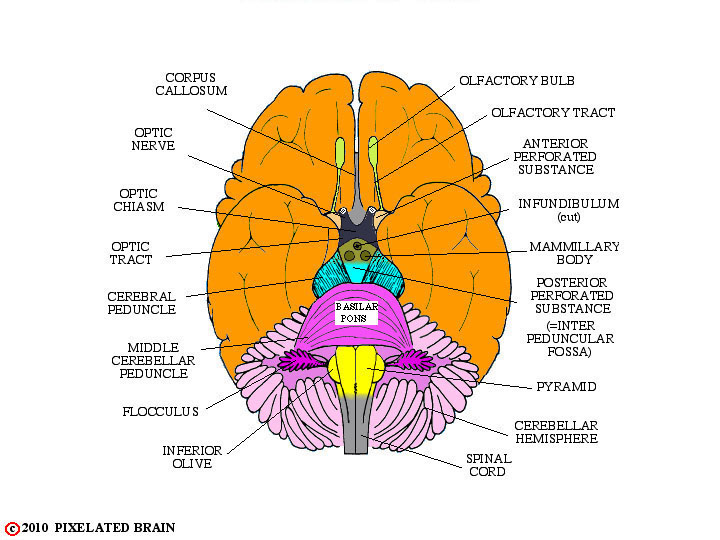
A BASAL VIEW of the BRAIN
The first order neurons of the olfactory system are the receptor cells. These cells have their cell bodies in the olfactory mucosa and send axons centrally, through small foramina in the cribriform plate, to enter the olfactory bulb. In the olfactory bulb synaptic relay occurs within a complex structure called a glomerulus. The major output cells of the bulb, conveying information centrally, are mitral and tufted cells. They form the olfactory tract, which lies on the ventral surface of the frontal lobe.
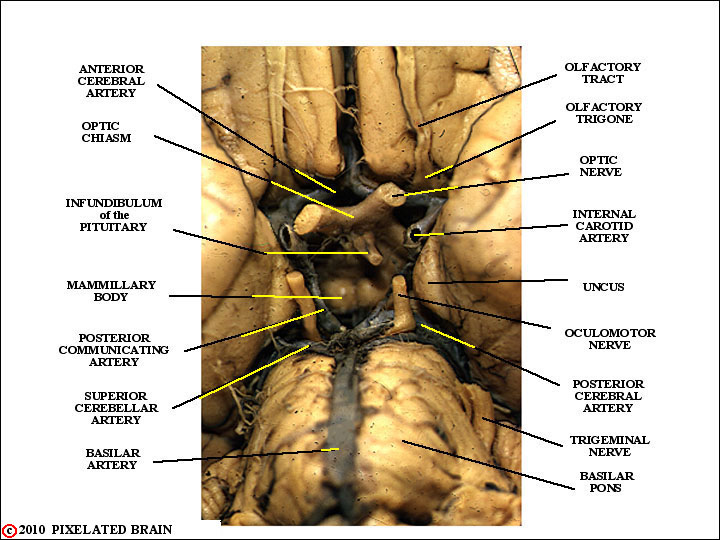
A BASAL VIEW of the GROSS BRAIN
The next view shows how things look in the real brain.

THE LIMBIC SYSTEM
a LATERAL VIEW
Let's now trace the fibers within the olfactory tract back to the regions where they terminate. This is a schematic side view of the brain that identifies most of the structures we will be mentioning.
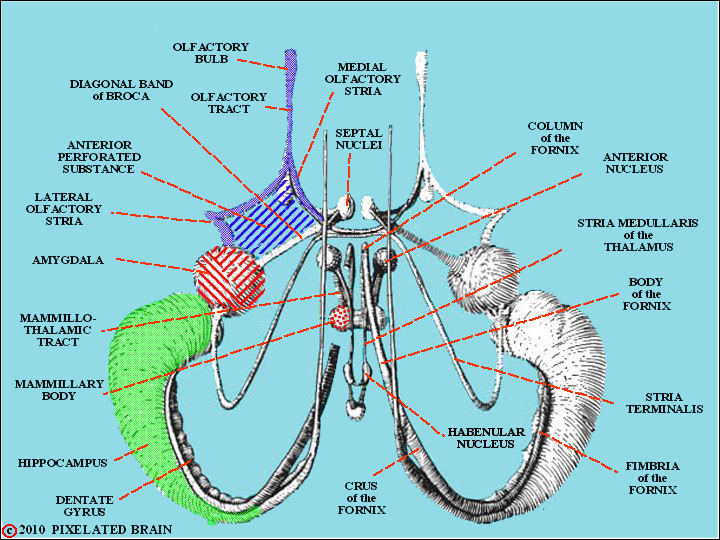
THE LIMBIC SYSTEM
a VIEW from "ABOVE"
This is a schematic view of this region from "above", with the diencephalon scooped out, so you can look right through it to see structures underneath - like the mammillary bodies.
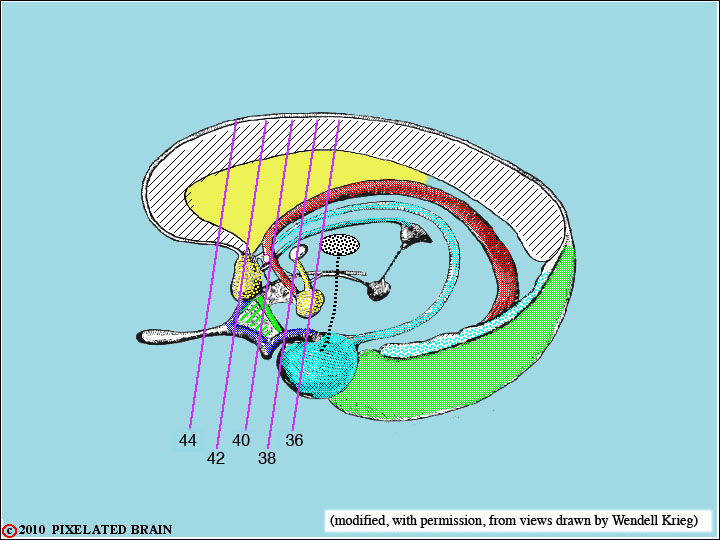
PLANE of SECTION
for
LIMBIC SYSTEM FRONTAL SLIDES
Use this view to orient the slides that follow.
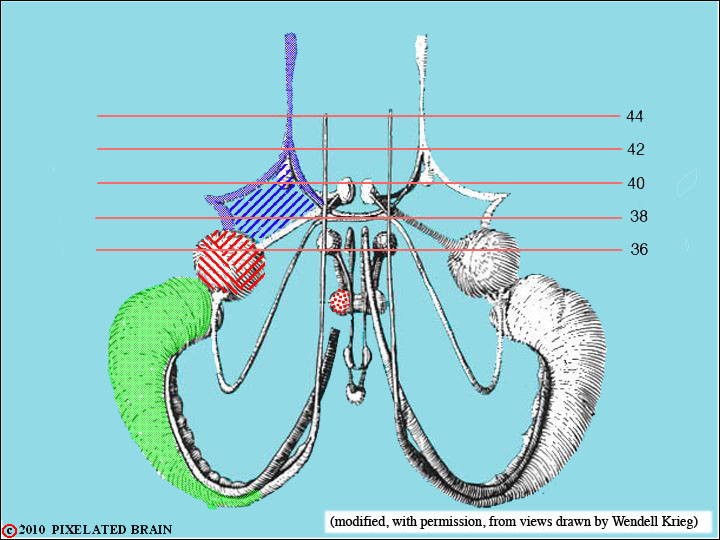
PLANE of SECTION
for
LIMBIC SYSTEM FRONTAL SLIDES
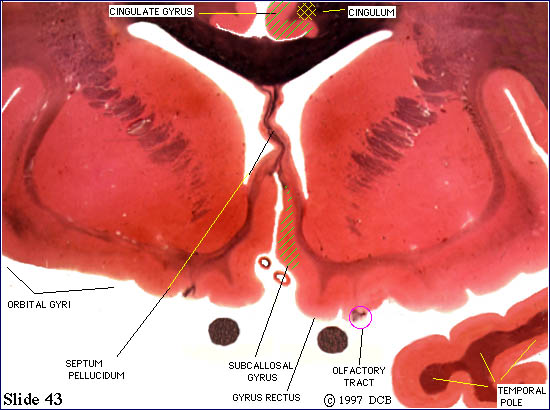
THE OLFACTORY PATHWAY
on
SLIDE 43
At this level, the olfactory tract is still a compact bundle of darkly staining fibers, but it has just fused with the orbital surface of the frontal lobe.
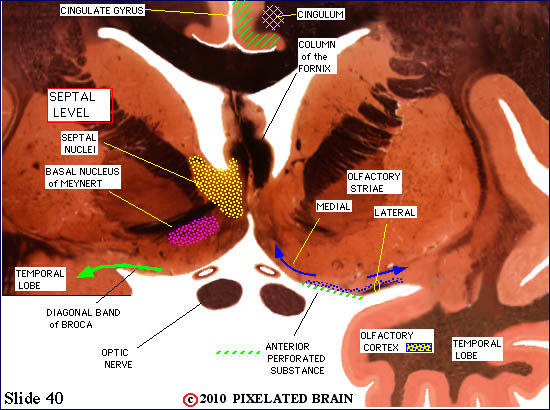
THE OLFACTORY PATHWAY
on
SLIDE 40
The two striae now diverge and the surface enclosed between them is the anterior perforated substance (see 1,3,4). The lateral stria will run laterally far enough to reach the point where the temporal and frontal lobes connect, then turn medially with the fibers ending in the amygdala and the overlying periamygdaloid cortex. The medial stria will run medially and dorsally to cross the midline as one component (the anterior limb) of the anterior commissure. These fibers will then run forward in the contralateral olfactory tract. Now, look at the slides that show all this happening.
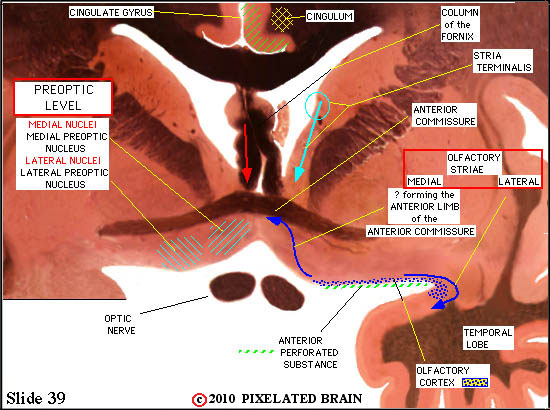
THE OLFACTORY PATHWAY
on
SLIDE 39
The medial stria approaches the anterior commissure. The lateral stria now "turns the corner" and enters the temporal lobe.
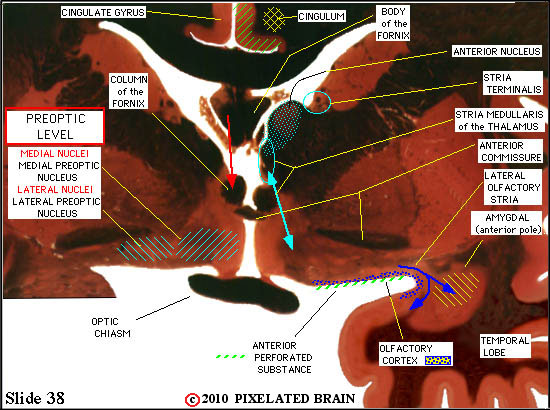
THE OLFACTORY PATHWAY
on
SLIDE 38
Fibers of the lateral stria approach the anterior pole of the amygdala.
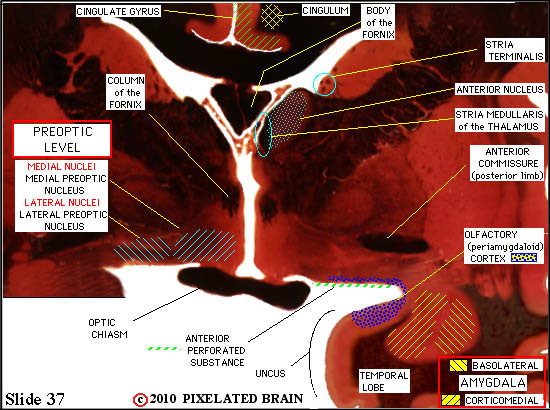
THE OLFACTORY PATHWAY
on
SLIDE 37
Ofactory fibers terminate in the corticomedial nucleus of the amygdala and the overlying periamygdaloid cortex.
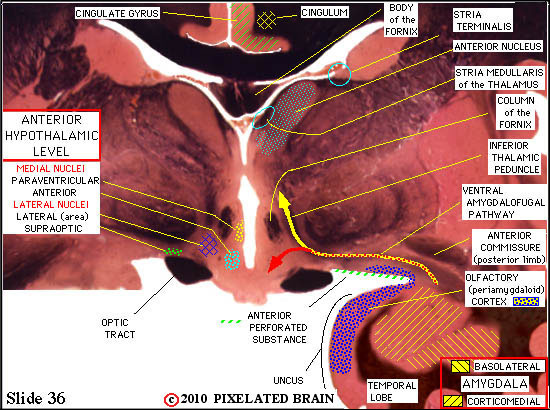
THE OLFACTORY PATHWAY
on
SLIDE 36
Ofactory fibers terminate in the corticomedial nucleus of the amygdala and the overlying periamygdaloid cortex.